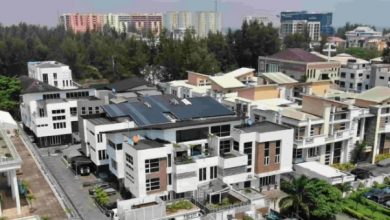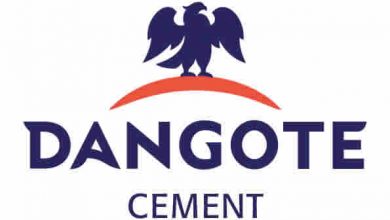Cement price hike and increased risk of homelessness, building collapse | Prestige Real Estate News
Cement price hike and increased risk of homelessness, building collapse


By Dayo Ayeyemi
Prices of cement and other building materials have surged in a matter of weeks, disrupting ongoing construction projects and increasing the budget of prospective projects. DAYO AYEYEMI spoke with experts who noted that the current price increase has implications on the nation’s housing deficit and heightens risk of building collapse in the future.
THERE are fresh fears of homelessness, increased cases of building collapse and building project abandonment among Nigerians as the price of a 50-kilogramme bag of cement jumped to N7,500 from a previous cost of N4,500 in December 2023, representing a 60 percent hike within two months.
Speaking with Nigerian Tribune, stakeholders said the rising cost of cement is already creating panic among builders, contractors, block manufacturers, real estate developers and intending low-income home owners.
Apart from this, they said that prices of other products such as sandcrete blocks and paving stones that depend on cement as part of components, have also increased.
Already, sandcrete block moulders have reflected the cement price hike on their products as nine- and six-inches blocks now sell between N900 and N700 respectively.
Raising the alarm about the high cost of cement and other building materials, the president, National Association of Block Moulders of Nigeria, Prince Adesegun Banjoko, said it is “a cause for grave concern”, raising fresh fears of building collapse in future.

According to him, the rate at which the cost of building materials in Nigeria has kept increasing on daily basis has left much to be desired.
“In particular, the daily increase in the cost of cement that is commonly used for various construction works as the main bonding agent to other materials, is of a very grave concern!
“This is because one of the inevitable fall-out of this vicious trend is to be expected very soon, a fresh wave of building and construction collapses/distress attributable purely to the factor of ‘managing materials’ and ‘cutting corners’ as a result of high prices thereby leading to loss of lives and properties,” he said.
“According to reports reaching my table as the national president, a bag of cement presently sells between N7,500 and N11,000! In particular, reports from Ondo State confirms it is as high as N11,000,” he added, appealing to government to brace up against those making life unbearable for the common man.
Commenting on the proposed Commodity Price Regulation Board by the government, Banjoko described it as “a welcome development.”
“The government should make it commence work aggressively and effectively. The surging dollar figure must be tamed by various means!
“The government should, as a matter of urgency, open our borders for both importation as well as more manufacturers of cement to increase supply to the market and make the price reasonable. A stitch in time, saves nine,” Banjoko said.
Raising the alarm over the consequences of cement price hike the on sector and economy, former president of the Nigerian Institute of Building (NIOB), Kunle Awobodu, maintained that it is a bad omen for the construction industry and the nation at large.
He said the astronomical rise in the price of cement coupled with the low purchasing power of Nigerians, will increase the temptation for compromise in the quality of construction work.
He tasked government on the need to step in quickly and save the nation from imminent danger due to substandard constructions.
Awobodu urged cement manufacturers to take advantage of Nigeria’s population to crash costs while the government should further address transportation and energy concerns.
“If these price increases and other macroeconomic variables are not addressed, the vision of housing many homeless Nigerians and the nation’s infrastructural revival will remain a mirage,” the NIOB president warned.
According to him, the current cement price increase would exacerbate an already volatile and precarious situation, adding that it would increase the need for more vigilance and policing of the construction processes.
“As an analogy, a country with sub normal conditions of living will battle with more crime with the implications of spending more to police the society. It thus pays more to invest in improving the quality of living to reduce predisposition to crime,” he said.
Even at lower prices, he noted that Nigerians were confronted with the challenge of owning their homes and developing other infrastructure.
He added that reports of ‘cutting corners’ due to compromised material inputs abound, emphasising that sandcrete blocks, concrete and mortar were products in which cement is part of the inputs for production.
Besides, Awobodu explained that price increase in construction materials without corresponding increase in citizens’ purchasing power would reduce activities in the construction sector meant to rejuvenate the economy.
According to him, low construction activities would translate into loss of jobs among other consequences.
“Where there is even activity, especially in the informal sector, risks are multiplied,” he said
He pointed out that construction contracts in a regime of skyrocketing and unstable prices would witness many fluctuation claims with the potential for disputes and project abandonment.
He said: “A cycle of project failures may start when prices are beyond the reach of clients and developers.”
Also decrying the situation, Lagos-based Estate Surveying and Valuation practitioner, Mr Femi Oyedele, warned that if the high cost of cement persists, it will affect the number of new building projects and houses that will be in the property market for lease and for sale.
Besides, he also expressed fear that cement price hike might trigger block manufacturers to reduce the quality of blocks, thereby compounding the possibility of more building collapse.
He said: “The increase in price of bag of cement which is now selling at N7,500 will push more Nigerians to become homeless and squatters due to high cost of rent, high cost of building new houses and high cost of buying new houses.
“Due to the long gestation period of building construction, this impact may not be immediately felt. If the high cost of cement persists, it will affect the number of building starts and the number of houses that will be in the property markets, for lease and for sale.
“With less observation of the building rules, for example, the mixture of cement for blocks should be 50kg of cement to 300kg of sharp sand. The high cost of cement will make block makers to reduce the quality of blocks. They may resort to 50kg of cement (one bag) to 500kg of sharp sand.
“Also, the mixture of concrete is supposed to be one bag of 50 kg of cement to 100kg of sharp sand and 200kg of granite mixed with clean water. Builders, especially developers who are building for others and contractors who gave signed construction contract when a bag of cement was N4,500 may want to cut corners,” Oyedele said.
To worsen the case, he disclosed that the price of reinforcement bar has also increased considerably by at least 25 percent between December 2023 and now.
He said Nigerians should expect more cases of building collapse due to low quality building structure as a result of compromised materials and process.
Former chairman, Nigerian Institution of Estate Surveyors and Valuers (NIESV), Lagos Chapter, Mr Stephen Jagun, said the implication of increase in the price of cement will further widen the housing deficit.
He said that the cost of construction has become very high due to increase in prices of cement and other building materials.
According to him, with the excessive cost of construction, developers would not be able to recoup their investment either by selling or leasing out.
“If they want to sell, the price will be embarrassingly high while rent to match the investment will be reached.
The implication will be further increasing the housing deficit.
“This already is leading to serious increase in rent. It is a simple law of demand and supply. Simply put we have excess demand.
“For ongoing construction works, there is need for monitoring to ensure compliance to standards. Otherwise, players may cut-corners to save cost which may lead to shoddy construction and likely building collapse,” he said.
President of the International Facility Management of Association (IFMA), Nigeria chapter, Mr Lekan Akinwunmi, said that people would always find a way around the situation. He called on government to look towards indigenous building materials as alternative.
“Rental value will increase, but it is going to be a chain effect. The tenant too will push the effect on his trade or service,” he said.
Former lecturers at Yaba College of Technology, Mr Suraj Borokini, said that cement price increase would push Nigerians to build only out of their needs.
Borokini said: “This is the time that we will not build for “ego” but buildings for just “needs”

“We have been engaged in wasteful construction in the past with unnecessary aesthetic construction. Design now will be of sustainability needs.”
Meanwhile, the Housing Development Advocacy Network (HDAN) has lamented the recent increase in the costs of construction materials in the country.
Speaking through its Executive Director, Mr. Festus Adebayo, it noted that this increase has effectively put affordable housing out of the reach of the average Nigerian.
HDAN is non-governmental organisation in the Nigerian housing and construction industry, advocating for affordable housing materials, low-cost construction projects, CBN housing intervention loans, mortgage financing, renewable energy, environmental protection, as well as C-of-O in the FCT among other real estate issues.
Adebayo decried the rise in the cost of cement and iron-rods among other building materials, describing the situation as “sad and unpardonable.”
“Nigerians are still waiting for President Bola Tinubu to make good on the mortgage and credit system he promised while campaigning for office,” he said.
He canvassed for government interventions in the area of decent low-cost and social housing for Nigerians.
Adebayo advised the Federal Government to make housing development affordable for all citizens irrespective of their incomes.
However, Nigerians, especially home builders, developers and government have been urged to adopt the use of local building materials in order to reduce cost of housing in the country.
This advice, according to the built environment experts, has become imperative following the rising costs of cement, reinforcement bars and other building materials in the market.
Besides, they said the advice became valuable in order to bridge Nigeria’s housing deficit, which is in the range of 20 million units, according to a United Nations estimate.
Alternative materials to the rescue?
Experts are of the opinion that if they builders cannot eradicate the use of cement and iron rod totally, there should be alternative materials that would help reduce their quantities in building production process.
They recalled that a lot of research had been carried out by the Nigerian Building and Road Research Institute (NBRRI) and Nigerian universities in the past on alternative building materials.
Some of such materials mentioned included local brick, NBRRI’s Pozzolana (alternative cement), clay pots, woods and bamboo, among others
Making case for the adoption of local building materials amidst rising cost of cement, Lagos-based estate surveying and valuation practitioner, Mr Femi Oyedele, said the way out is for Nigeria to have its own housing culture.
This, he said could only be achieved by adopting the use of local building materials.
He suggested the use of burnt brick, unburnt brick made from laterite soil and ‘alubond’, a form of aluminum sheet that can be produced from recycled can drink.
Oyedele said: “Our dependence on cement is too much. We can change to burnt bricks made from laterite for external walls and unburnt bricks for internal partition. These do not require cement to bond. Burnt bricks do not need plastering and for rendering of internal walls. We can use Plaster of Paris (POP) or wall paper. We can also use alubond, a form of aluminium sheet that can be produced from recycled can drinks.”
According to him, Nigeria may need to set up industries that will manufacture sanitary wares like water closets, sinks and wash hand basins, adding that more tile manufacturing companies could be established for the purpose.
“Nigeria is a tropical country with timber that can be derived from its forests. Wood shavings can be laminated by processed plastic membranes to form window and door profiles that will be cheaper than imported aluminum profiles. We can also adopt wooden houses to make affordable and adequate housing for Nigerians,” he said.
Talking about the issue in recent time, the Managing Director, Ace Hi-Tech Construction Company Limited, Adewunmi Okupe, said he had been advocating the use of alternative building materials to reduce cost of building mass housing units for the past 30 years.
Although he said there was no full alternative to cement, certain efficient materials have been developed in this area.
To reduce the overall usage of cement by developing alternative materials, he canvassed the use of stabilised laterite bricks, saying it could save builders four to 10 percent cement.
“This is a lot of savings in cement usage if the material is adopted for building walls,” he said.
He also mentioned that the use of ribbed suspended floors can help to reduce the volume of concrete and cement used in suspended slab.
“There was a time that hollow clay pots were introduced to reduce concrete in suspended floors too. All these efforts should be followed up,” he said.
According to him, wood and bamboo were tensile materials just like steel were ready alternatives to iron rods in a number of cases, adding that architects and engineers could integrate them in appropriate sections of their designs to start with.
Okupe explained that NBRRI had developed these materials over the years but are yet to be commercialised.
“I don’t think the materials have been commercialised,” he said.
The managing director called for concerted efforts among built environment professionals, saying they should come together to present alternatives developed for every conventional building element.
In addition, he said professionals could build a prototype house completely with alternative materials.
Okupe also advocated the use of integrated wood flooring for suspended slabs in residences, noting that home builders could achieve over 75 percent reduction in the use of concrete. “Only wire mesh will be needed to reduce steel reinforcement completely,” he said.
- Nigerian Tribune







